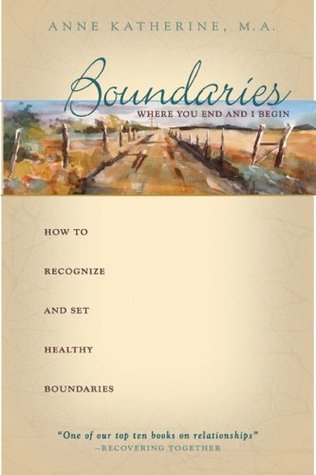What do you think?
Rate this book


* Esther tells Betty a secret Mary told her.All but one of the above incidents violate boundaries (your boss asks you if you'd like a hug). In Boundaries: Where You End and I Begin, Anne Katherine explains what healthy boundaries are, how to recognize if your personal boundaries are being violated, and what you can do to protect yourself.
* Your therapist invites you to go for coffee.
* Your boss wants to know the details of your personal life.
* Your boss asks you if you'd like a hug.
* Mom tells little Debbie about her troubles with Dad.
* Your new neighbor pats you on the bottom as he turns away.
* Your mother makes a comment about your being overweight.
192 pages, Kindle Edition
First published January 1, 1991